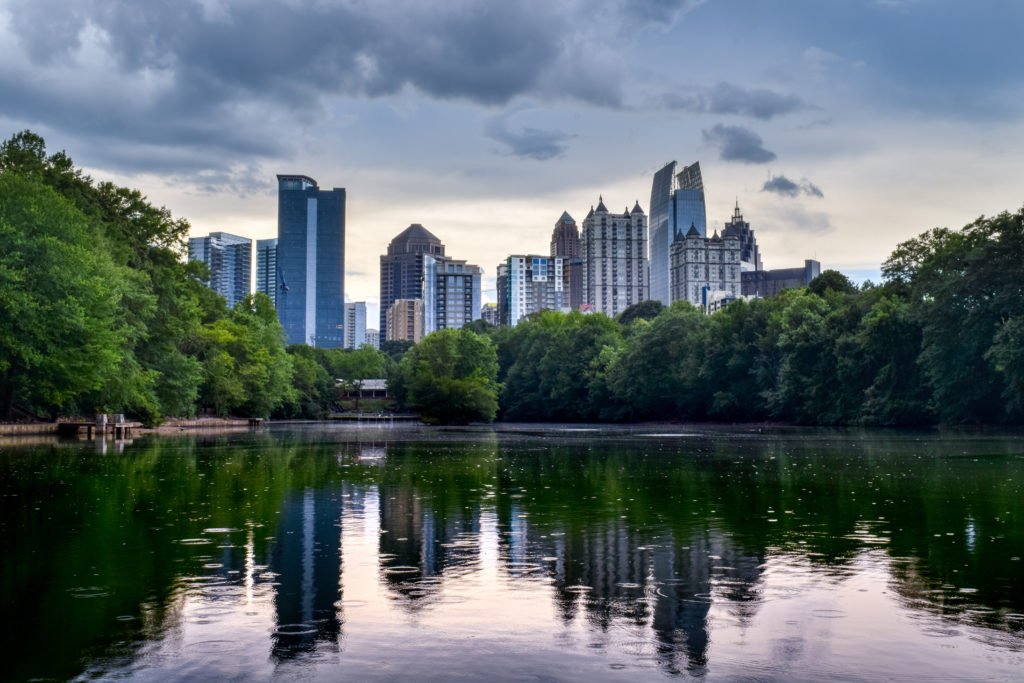About Us
20 Years of Achievements
Watch the video
More than 99% of our water comes from rivers, streams and reservoirs. In fact, nearly 71% of the water for the District comes from Lake Lanier and the Chattahoochee River. The rest of the water comes from the Etowah, Flint and Ocmulgee rivers. Our rivers are fairly small, so we capture and store rainfall in reservoirs to provide relief in times of drought.
Reservoirs provide the principal way to ensure that the region has water year-round, even during times of drought. There are more than 20 small water supply reservoirs located in various parts of the region. Two Federal reservoirs – Lake Lanier and Allatoona Lake – are major sources of supply for the region. In addition to supplying drinking water, Lake Lanier and Allatoona Lake provide flood control, hydroelectric power generation, recreation and fish and wildlife management.

Although we get an average of 50 inches of rain per year, it is not consistent month to month, or year to year. This means both floods and droughts are challenges we must be prepared for. Flash droughts, a new phenomenon that occurs as droughts begin faster than in the past, can stress our water supplies quickly. This is why smart water use is always important, even if it just rained.

When it rains, stormwater runoff flows over the land or through storm sewer pipes into our reservoirs and other local bodies of water. Stormwater is actually critical to replenish our water sources. Unfortunately, stormwater also picks up any pollutants or litter as it flows across surfaces on its journey back to our rivers and lakes. Since this is where most of our water supply comes from, stormwater pollution can make monitoring and treatment of our drinking water more difficult and costly. Proper management of stormwater helps avoid negative environmental impacts like erosion, flooding and contamination of our water.

We can’t get much water from the ground because underneath our soil is a layer of thick granite. You are probably familiar with Stone Mountain, but the part sticking out of the ground is only the beginning. The rock extending under a large part of our region seriously limits the amount of water that can be withdrawn from the ground. In fact, groundwater makes up only 1% of metro Atlanta’s total water supply.

Our water is limited, so metro Atlanta has worked hard to save this valuable resource. In fact, we use 30 percent less water now than we did in 2000. Despite impressive conservation results, maintaining the efficiency of our water supply network is essential for future needs. That’s why we work with local, regional, and state governments, as well as water utilities and a host of stakeholders to promote some of the most aggressive water supply and conservation efforts in the country.

Water supply is not just where our water comes from, but also how it gets from those sources to our homes and businesses. The reliability of clean, safe water every time you turn on the faucet is the result of a sophisticated and technologically advanced network of systems that require constant maintenance and investment. Water management includes supply, treatment, distribution, collections, interconnections and the interaction of these infrastructure systems with the natural systems.

Water used in homes and businesses is called wastewater. In our communities, the majority of wastewater is treated at one of the many facilities in our region which have the combined capacity to treat nearly 700 million gallons per day. A network of infrastructure, including approximately 19,000 miles of sewer pipe, collects and transports wastewater to the treatment facilities where it is treated to high-quality standards before being returned to surface water sources. The effective infrastructure and wastewater treatment planning by the Metro Water District supports the return of safe, high-quality water to our rivers and lakes.
A smaller portion of wastewater generated in the Metro Water District is treated by septic systems. The growth of septic systems has greatly slowed as more sewer service has become available.

Electric utilities use water to generate electricity. Then, water utilities use energy to treat and distribute water in our homes and businesses. Finally, utilities use energy to pump and treat wastewater before it goes back into rivers and streams. So, even saving energy can help save water.
